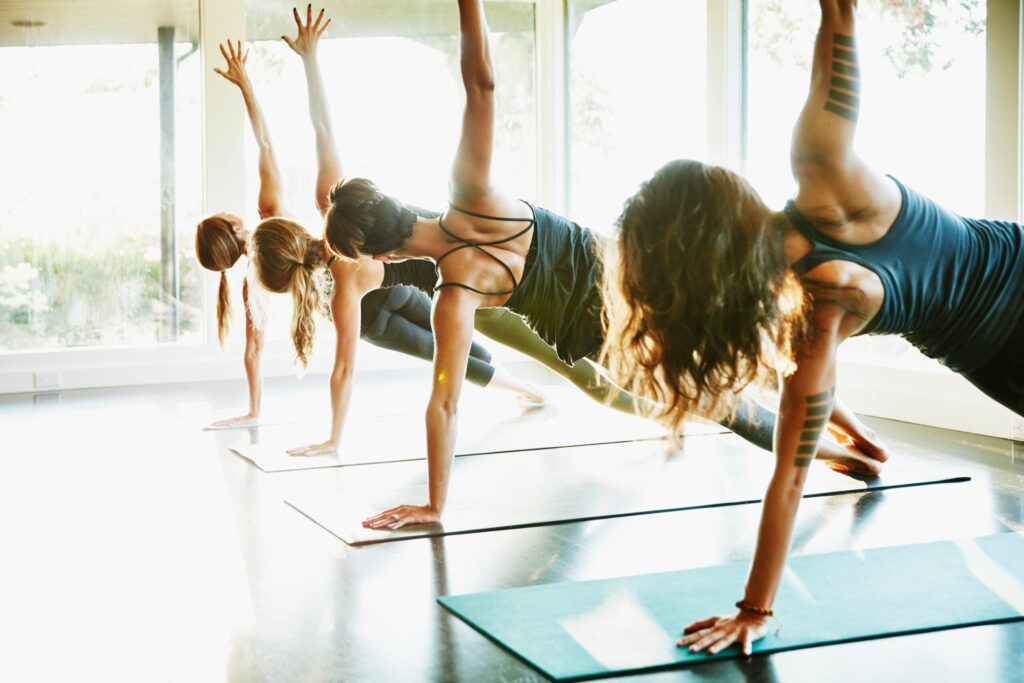Things are rarely all good or bad. It’s all about context.
(Photo: Thomas Barwick | Getty)
Updated August 27, 2025 03:29PM
We’ve all heard cues in yoga class that don’t exactly make sense to us. After all, language is a nuanced thing, and the way each of us interprets words varies. Some of us respond to simple and direct language, others to anatomical details, and still others to visual analogies. Even instructions that once helped us connect to sensation as beginners can feel overdone as our body awareness develops with continued practice.
Although there’s no “perfect” way to express any movement or muscle action, impassioned debates over differing viewpoints and opinions quickly find their way online, including calls to cancel certain ways of saying things. That can leave teachers second-guessing every single word that leaves their mouths and students wondering whether or not to follow their instructions.
But even cues that are commonly deemed controversial can still be useful depending on the context. Before you completely disregard a cue, take a closer look. After all, yoga is less about all-or-nothing thinking and judgement than it is discernment and wisdom.
7 Controversial Yoga Cues You Need to Rethink
Following are some cues that can have redeeming qualities in certain contexts. But always give priority to how a cue feels in your body.

1. Draw Your Shoulders Back and Down
This almost ubiquitous cue combines two movements—drawing the shoulder blades toward the spine, known as retraction, and bringing the shoulder blades down the back, known as depression. This is also commonly cued as “draw your shoulders away from your ears.”
These actions are intended to counter the common tendency to round the shoulders forward and hike them up toward the neck, which can create tension and compression.
Why is the Cue Controversial?
When your arms lift overhead, your shoulder blades also need to move. More specifically, the bottoms of your shoulder blades need to move away from each other and upward in order to clear some bony protuberances.
This natural and necessary movement is the opposite of the often cued “back and down” that you hear in poses such as Upward Salute (Urdhva Hastasana), Warrior 1 (Virabhadrasana I), and Downward-Facing Dog (Adho Mukha Svanasana).
When Is This Cue Helpful?
Although the scapular movements of retraction and depression are unhelpful when you’re taking your arms overhead, they’re exactly what you need in certain backbends. Specifically, those in which your arms move down and back to create the heart-opening experience of Bridge (Setu Bandha Sarvangasana), Reverse Plank (Purvottanasana), Locust (Salabhasana), Camel (Ustrasana), and Bow Pose (Dhanurasana).
These actions also come in helpful in Warrior 3 (Virabhadrasana III) when you take variations with your arms by your sides or behind you in a Humble Warrior clasp or in a forward-leaning version of High Lunge (Ashta Chandrasana). “Shoulders back and down” is also a useful reminder in Mountain Pose (Tadasana) for those with a tendency toward rounded shoulders.
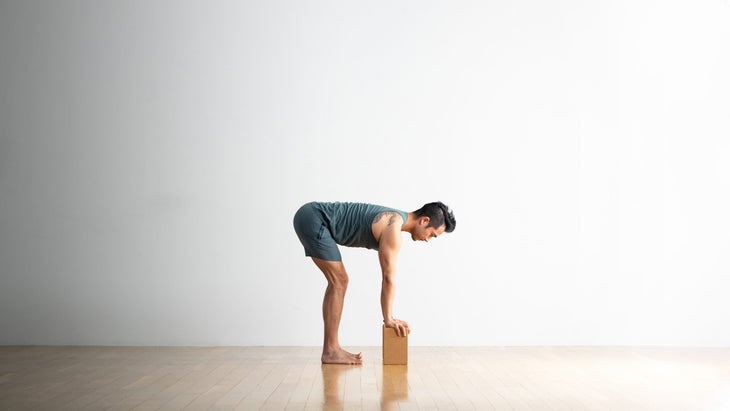
2. Keep a Flat Back
This instruction is generally offered to encourage length in the spine as you hinge forward at your hips. You might have heard it when setting up for a Seated Forward Bend (Paschimottanasana) or in Standing Half Forward Bend (Ardha Uttanasana).
Why is the Cue Controversial?
Even when neutral, your spine is actually not flat. It’s shaped in graceful, natural curves that arch slightly backward at the neck and low back and round gently forward at the mid-back and sacrum.
A literal flat back would require deviation from those natural curves. So when the desired alignment is a neutral spine (as it usually is when this cue is provided) your back won’t actually be flat.
“Sit tall,” “stand tall,” and “reach through your crown” are more accurate ways to encourage finding length from crown to tailbone without suppressing the spine’s neutral shape. “Hinge forward at your hip creases” or “lead with your chest” also work.
When Is This Cue Helpful?
There is a time and place for everything, including flattening the natural curve of the low back. This often occurs during core work that activates your abdominal muscles and, in turn, literally flattens your low back. Think Plank Pose, Boat Pose, or hovering one or both legs while you’re lying on your back. The “flat back” cue could be helpful then, at least in terms of the lumbar region.
Also, communication does not always need to be strictly literal to be helpful. Analogies, metaphors, and visualizations can be powerful ways to express desired outcomes over default ones. For some students, imagining a “flat back” could provide a useful (if exaggerated) reference to move away from rounded spine toward a more neutral shape. Anatomical accuracy is less important than a cue being effective.
3. Breathe Into Your Belly
Your lungs have the capacity to almost entirely fill your rib cage. Many of us, though, fall short of that potential by filling only our chest. The invitation to “breathe into your belly” reminds you to take more expansive breaths and grants permission for your abdomen to relax enough to allow for that.
Why is the Cue Controversial?
It’s obviously not anatomically possible to breathe into your stomach. Also, for some people, focusing on the belly can drive a dysfunctional pattern of intentionally exerting force to push the abdomen outward instead of allowing the lungs to create that movement as they expand.
There’s no shortage of alternate cues, including “breathe low and wide,” “send your breath to the bottom of your lungs,” or “allow your belly to move as you breathe”.
When Is This Cue Helpful?
Again, a cue doesn’t need to be anatomically accurate to be effective. You can’t breathe into your actual stomach, but when in a restful position that doesn’t require your abdominal muscles to be engaged, the visual reference of a yielding expansive center might be exactly the encouragement your breath needs. It all comes down to choosing cues that work for you or your students.
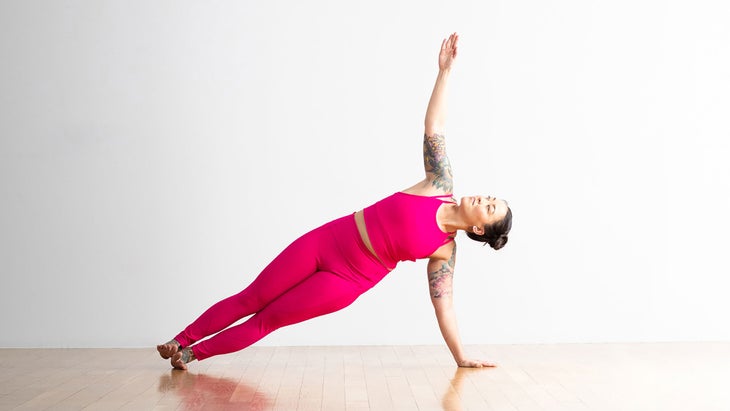
4. Square Your Hips
This cue asks you to orient the pelvis in relation to something external to your body. You may occasionally hear the cue “square your hips” to the front of the mat in Warrior 1, to the side of the mat in Warrior 2 (Virabhadrasana II), or to the mat in Three-Legged Dog.
Why is the Cue Controversial?
Sometimes a cue becomes a default instruction for a pose, whether or not it’s anatomically feasible in that shape. In Warrior 1, for example, most of us lack the ankle mobility to simultaneously ground our back heel and align our pelvis with the front of the mat. In Warrior 2, tracking our front leg forward while turning our hips completely to the side requires more hip mobility than most of us possess.
“Square your hips” is also a much-debated instruction in twists, as many find rotation to be more comfortable when the pelvis and spine move together instead of fixing the hips in place. In these scenarios, attempting to square the hips results in undesirable compensation elsewhere in the body, especially in sensitive places such as the knee or the low back.
When is the Cue Helpful?
There are plenty of situations where it is possible to square your hips, including to the front of the mat in High Lunge, to the side wall in Goddess (Utkata Konasana) and Side Plank (Vasisthasana), and to the mat in Warrior 3.
It might even be appropriate to keep your hips square during twists if your intention is to focus the rotation on the mid and upper back and leave the lumbar fairly neutral, although you will need to lessen your expectations in terms of how much you’ll be able to twist.
When you hear the cue in Warrior 1 and 2, try easing up on how literally you interpret it. Instead, direct your hips more in the general direction of the reference point in question rather than precisely squaring your hips.
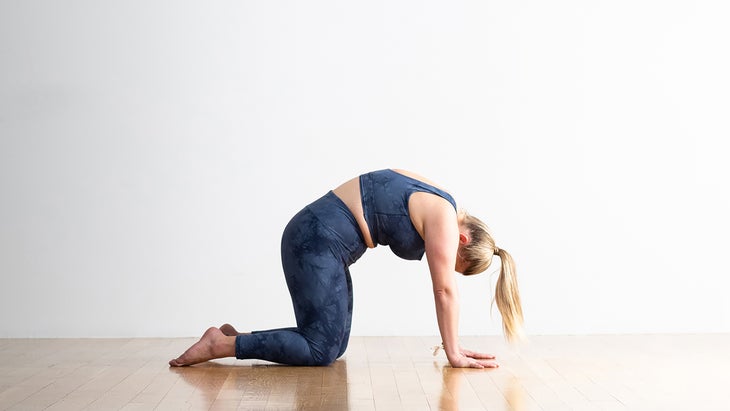
5. Tuck Your Tailbone
With this much-debated cue, you are encouraged to move the point of the tailbone forward toward the pubic bone, effectively tilting the bowl of the pelvis backward into what’s called posterior pelvic tilt. It’s intended to counter the very common postural pattern of anterior pelvic tilt, in which the pelvic bowl tilts forward and lumbar curve deepens. The result is a neutral pelvis, such as what you aim for in Mountain Pose.
Why is the Cue Controversial?
The problem is this instruction is helpful only for students who are already in anterior pelvic tilt. Following the instruction takes the rest of the class OUT of desired alignment. But the tail tucking cue is commonly overused by teachers as a default cue for many poses.
In split-stance standing poses, such as lunges, the two legs are in different positions, performing different actions. Cueing the pelvis as a single entity can be problematic and is generally considered too aggressive by asking one half of the pelvis to work against the other. Also, because the pelvis and low back tend to move together, following this cue unnecessarily decreases your lumbar curve.
If your aim is a neutral or natural position for the pelvis, explore more subtle cues, such as “lengthen your sacrum,” “lift your frontal hip points,” and “draw your pubic bone toward your navel.” It’s possible to overdo any cue, but using reference points you can easily see and feel might encourage less of an exaggerated response. It could even be helpful to focus on sensation instead of outward position with cues such as “see if you can create space for your low back.”
When is the Cue Helpful?
Your pelvis is meant to be able to tilt forward and back, and this movement can be a great way to maintain healthy low back mobility. Tucking your tail in Cat Pose, for example, sets you up for a larger movement arc as you transition into Cow and facilitates more mobility in the pelvis and spine.
This same posterior pelvic tilt can also be useful as you move into backbends such as Bridge or Locust by helping focus your body on lengthening the hip flexors rather than compressing the low back.
6. Relax your Glutes
Commonly heard in backbends, this cue encourages you to do exactly as you’d expect—release the muscles found along the back of your pelvis. The target of this cue is the gluteus maximus, which plays a key role in yoga backbends through hip extension. When you contract this muscle, it helps lift the pelvis off the mat in Bridge or Wheel and float the thigh bones off the mat in Locust and Bow Pose.
Why is the Cue Controversial?
Like most large muscles, the glute max has more than one action. Contraction of its lower fibers, which are more vertical, contribute more to hip extension, whereas contraction of its upper fibers, which are more horizontal, result in hip external rotation, or turning the thighs and knees out away from the midline of the body.
There’s a school of thought that believes squeezing your glutes over enthusiastically in backbends will result in your knees widening rather than your deepening the arch in your back. (Squeezing a block in between the thighs can help with this unwanted outcome.) Also, you need to contract your lower glutes to lift your hips or legs off the mat in certain backbends, so it’s counter productive to try to relax them at the same time.
There are more nuanced ways to bring energy and attention to the lower portion of the glutes, such as “lengthen your sacrum” and “reach your sit bones toward your heels.” Also, in bent-knee backbends such as Bridge or Bow, explore “draw your heels toward your shoulders” to recruit the hamstrings, which are vital synergists to the activation of the lower glutes.
When is the Cue Helpful?
The instruction is most helpful when you’re already in the backbend. Explore instructions that help you be more discerning about what you are feeling as you explore the balance of effort and ease, such as “keep your backbend and relax your glutes” or “can you keep your outward shape and soften the sides of the sacrum?”
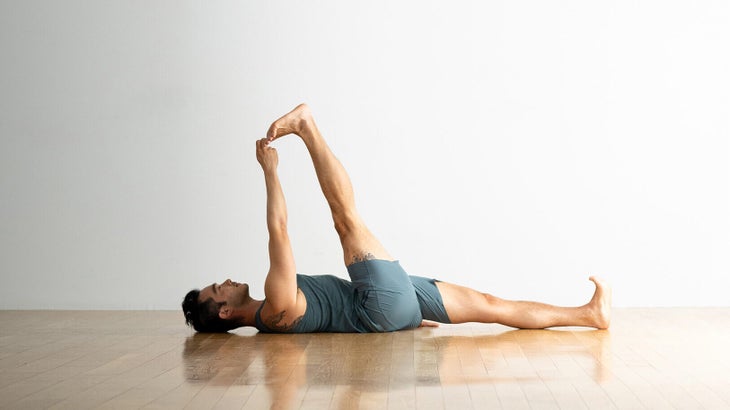
7. Lift your Kneecaps
This cue aims to engage the quadriceps muscles, which run along the front of the thigh and come together to form the patellar tendon that attaches to the kneecap (patella). Contracting these muscles shortens the quads and literally pulls your kneecap closer to the tops of your thigh, which in turn provides greater strength and stability in standing and seated straight-leg poses.
You might hear teachers say this cue in Mountain Pose, Extended Triangle (Utthita Trikonasana), and Seated Forward Bend.
Why is the Cue Controversial?
The desired outcome is a straight leg. But because the cue leaves the backs of the legs out of the equation and results in front leg engagement only, some students move beyond straight legs and into hyperextension.
Tell yourself or your students simply to “engage your legs” or take actions that engage the legs, such as pressing down through your feet and lifting the muscles on all four sides of your legs.
When is the Cue Helpful?
In straight-legged forward folds, in which the primary goal is a stretch along the backs of the legs rather than strength or stability, engaging the quads can help intensify the sensation. This occurs through a neurological process called reciprocal inhibition, in which the contraction of a muscle (in this case, the quads) leads to relaxation of its antagonist muscle (the hamstrings).
You can use this to your advantage and encourage the hamstrings to relax in stretches such as Seated Forward Bend, a Wide-Legged Forward Bend (Upavistha Konasana), and Reclined Hand-to-Big-Toe Pose (Supta Padangusthasana).
Language can be undeniably powerful. An action that is supremely helpful in one pose or movement might have the opposite effect in another. Should you demonize some phrases completely? Probably not. Should you consider whether that cue is relevant in this particular pose? Absolutely.


